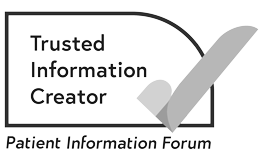Treating relapsed myeloma
What is relapsed myeloma?
Treatment for myeloma is usually very effective and most people have a good response to treatment. There may be long periods of time when you do not need any treatment and have no symptoms caused by myeloma.
After a time, myeloma usually comes back and needs further treatment. This is called relapsed myeloma. For some people, this may be many years later.
Treatment options if myeloma comes back
Your doctor and nurse will talk to you about the different treatment options. Sometimes, it may be possible to repeat the first treatment you had. This depends on what the treatment was and how long ago you had treatment. Or you may be offered a different treatment or clinical trial. You will also have treatments to control bone problems and other symptoms.
You may have one of the following targeted therapy drugs:
Or you may have a second high-dose treatment and stem cell transplant.
If you have a further relapse, other targeted therapies may be used. They are often given with steroids, and include:
- lenalidomide
- ixazomib and panobinostat (with bortezomib)
- pomalidomide
- daratumumab
- isatuximab.
About our information
-
References
Below is a sample of the sources used in our myeloma information. If you would like more information about the sources we use, please contact us at cancerinformationteam@macmillan.org.uk
National Institute for Health and Care Excellence (NICE). Myeloma: diagnosis and management. NICE guideline [NG35]. Published: 10 February 2016 Last updated: 25 October 2018. Available from: https://www.nice.org.uk/guidance/ng35/chapter/recommendations Accessed: 19/07/22
Jonathan Sive et al., on behalf of the British Society of Haematology. British Journal of Haematology. Guidelines on the diagnosis, investigation and initial treatment of myeloma: a British Society for Haematology/UK Myeloma Forum Guideline. Published: 21 March 2021 Available from: https://onlinelibrary.wiley.com/doi/10.1111/bjh.17410 Accessed: 19/07/22
M.A. Dimopoulos et al. Annals of oncology. European Society for Medical Oncology (ESMO). Multiple myeloma: EHA-ESMO Clinical Practice Guidelines for diagnosis, treatment and follow-up. Volume 32, ISSUE 3, P309-322, March 01, 2021. Available from: https://www.annalsofoncology.org/article/S0923-7534(20)43169-2/fulltext Accessed: 19/07/22
-
Reviewers
This information has been written, revised and edited by Macmillan Cancer Support’s Cancer Information Development team. It has been reviewed by expert medical and health professionals and people living with cancer. It has been approved by Senior Medical Editor, Dr Anne Parker, Consultant Haematologist.
Our cancer information has been awarded the PIF TICK. Created by the Patient Information Forum, this quality mark shows we meet PIF’s 10 criteria for trustworthy health information.
The language we use
We want everyone affected by cancer to feel our information is written for them.
We want our information to be as clear as possible. To do this, we try to:
- use plain English
- explain medical words
- use short sentences
- use illustrations to explain text
- structure the information clearly
- make sure important points are clear.
We use gender-inclusive language and talk to our readers as ‘you’ so that everyone feels included. Where clinically necessary we use the terms ‘men’ and ‘women’ or ‘male’ and ‘female’. For example, we do so when talking about parts of the body or mentioning statistics or research about who is affected.
You can read more about how we produce our information here.
Date reviewed
This content is currently being reviewed. New information will be coming soon.

Our cancer information meets the PIF TICK quality mark.
This means it is easy to use, up-to-date and based on the latest evidence. Learn more about how we produce our information.
How we can help



